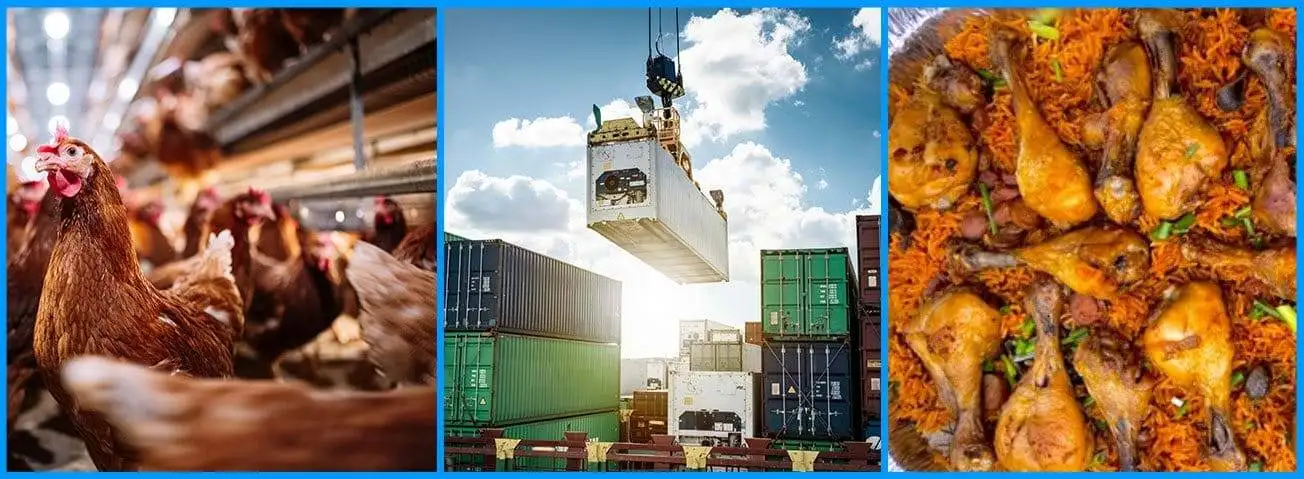Explore the global meat trade with our comprehensive report on the top 10 meat-importing countries. Delve into detailed analysis of import volumes, types of meat, and market dynamics. Understand how economic, cultural, and policy factors shape the meat import landscape, with up-to-date statistics and insights up to 2023. Essential reading for industry professionals, policymakers, and global trade analysts.
Related: Top 10 Meat Producing Countries 2023
Introduction to The Global Meat Trade Industry
The global meat trade plays a pivotal role in shaping food security and consumer diets worldwide. As a vital component of international commerce, it involves the exchange of various types of meat, including beef, pork, poultry, and lamb, among countries. The importation of meat is particularly crucial for nations where local production cannot satisfy the demands of the population, either due to limitations in agricultural capacity or specific consumer preferences for certain types of meat.
Moreover, meat imports are integral to maintaining a stable food supply, ensuring a diverse range of protein sources, and addressing nutritional needs. They also enable countries to cope with seasonal fluctuations, natural disasters, or production shortfalls that might affect local meat supply.
In essence, the global meat trade not only underpins food security but also plays a significant role in meeting the evolving dietary demands and preferences of consumers around the world.
Top 10 Meat Importing Countries: Estimated Import Volumes
1. China
- Total Meat Imports: Approximately 9-10 million metric tons.
- Types:
- Pork: Around 4 million metric tons.
- Beef: 2-3 million metric tons.
- Poultry: 1.5-2 million metric tons.
2. Japan
- Total Meat Imports: About 3 million metric tons.
- Types:
- Pork: 1.2 million metric tons.
- Beef: 1 million metric tons.
- Poultry: 0.8 million metric tons.
3. United States
- Total Meat Imports: Around 4 million metric tons.
- Types:
- Beef: 1.5 million metric tons.
- Pork: 0.5 million metric tons.
- Poultry and Lamb: Balance.
4. Germany
- Total Meat Imports: Approximately 2 million metric tons.
- Types:
- Pork: 1 million metric tons.
- Beef and Poultry: Balance.
5. United Kingdom
- Total Meat Imports: About 1.5 million metric tons.
- Types:
- Beef: 0.6 million metric tons.
- Pork and Poultry: Balance.
6. Italy
- Total Meat Imports: Around 1 million metric tons.
- Types:
- Pork and Beef: Majority.
- Poultry: Lesser extent.
7. Mexico
- Total Meat Imports: Approximately 1.5 million metric tons.
- Types:
- Pork: 0.7 million metric tons.
- Beef: 0.5 million metric tons.
- Poultry: Balance.
8. Russia
- Total Meat Imports: About 1-1.5 million metric tons.
- Types:
- Beef and Pork: Majority.
- Poultry: Lesser extent.
9. South Korea
- Total Meat Imports: Around 1.5 million metric tons.
- Types:
- Beef: 0.6 million metric tons.
- Pork: 0.5 million metric tons.
- Poultry: Balance.
10. Saudi Arabia
- Total Meat Imports: Approximately 1 million metric tons.
- Types:
- Poultry: 0.7 million metric tons.
- Lamb and Beef: Balance.
Challenges and Trends for Meat Importer
- Fluctuations in meat import volumes due to factors like animal diseases, global pandemics, and economic downturns.
- Growing interest in sustainable and ethically sourced meat products.
- Impact of alternative protein sources on meat imports.
Related: The World’s Top 5 Meat Brands
Conclusion
In conclusion, the global meat trade is a complex and essential network that significantly contributes to food security and consumer satisfaction across the world. By facilitating the movement of various types of meat across borders, it compensates for regional production gaps and caters to diverse dietary preferences and needs.
This trade is not only crucial for ensuring a steady and varied supply of protein but also for supporting economic stability in both exporting and importing nations. As the world continues to grapple with challenges like population growth, environmental sustainability, and shifting dietary trends, the role of the global meat trade will remain a key factor in shaping the future of food security and international commerce.
Related: Top 10 Meat Exporting Country Volumes
Data Sources
- Food and Agriculture Organization (FAO)
- World Trade Organization (WTO)
- National trade statistics from the respective countries



